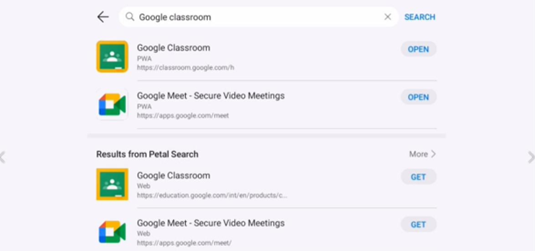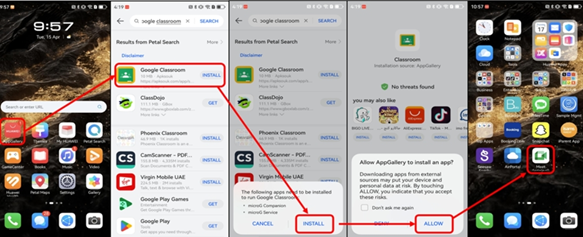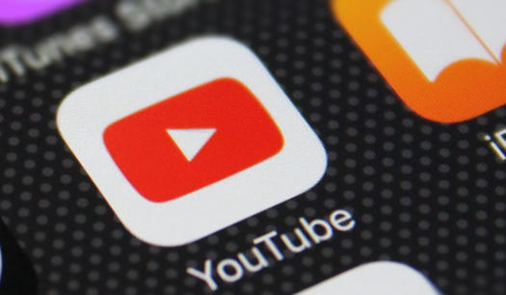Navigating app installations on Huawei devices can be tricky due to the absence of Google Mobile Services, but getting Google Classroom is easier than you think. This guide outlines straightforward methods for installing Google Classroom on Huawei phones using AppGallery. If you're unsure how to install Google Classroom on huawei, this resource simplifies the process so you can access your educational resources seamlessly without technical hassle. Whether you’re a student, a parent, or a teacher needing digital coordination, this tutorial is tailored for you. We ensure that you’re able to get the app up and running swiftly while circumventing compatibility issues effectively.

Before proceeding, ensure your Huawei device runs on EMUI or HarmonyOS with a supported version; typically, devices running EMUI 10 or higher, or HarmonyOS 2.0 and above, provide the best experience. Start by checking your phone’s settings for the Software Update section and confirm it’s updated to at least these versions. Compatibility is key, as it guarantees the app functions smoothly. If your device is outdated, consider updating before installing any major apps. These prerequisites will greatly enhance your installation process and user experience, reducing app crashes or failures due to technical mishaps.
A stable internet connection is vital during installation to ensure no disruptions. Use Wi-Fi or reliable mobile data while installing. Additionally, having a Huawei ID is essential. This ID allows you to download apps from AppGallery, Huawei’s official app distribution platform. Create a Huawei ID if you haven’t done so by navigating to the Account section in the phone’s settings. You’ll also need to accept AppGallery’s terms and conditions. This setup effort allows seamless access to apps, including Google Classroom, and ensures prolonged support and updates directly from Huawei.
Access the AppGallery from your device’s home screen. Use the search bar typically located at the top. Type “Google Classroom” and tap on the search icon. AppGallery will display relevant results; identify Google Classroom from the list. You might find similar apps or supplementary ones; however, ensure the app you’re selecting is Google Classroom. Keep an eye out for user reviews or the developer’s name for confirmation. This initial step plays a crucial role in obtaining the correct application, setting the tone for a successful installation.
After locating Google Classroom, tap the ‘Install’ button usually found under the app’s name or icon. Installation requires various permissions, including access to your device’s storage and network operations. You must grant these permissions upon prompt for the app to function optimally. Accept the permissions cautiously, reviewing their necessity if uncertain. Should any permission annoy or disrupt your experience, it can be adjusted later in the device’s settings. This crucial step ensures Google Classroom installs successfully, maintaining peace of mind throughout.

Once installed, open Google Classroom from the app drawer or home screen. The app will request you to sign in with a Google Account essential for syncing your Classroom data. Enter your credentials, clicking ‘next’ or ‘sign in.’ The app might prompt for additional permissions related to notifications or media sharing. These further facilitate seamless integration with your Huawei device. Once signed in, the app’s dashboard becomes accessible, enabling you to join classrooms, create assignments, and interact in a digital learning environment with ease.
MicroG and GBox are alternative app frameworks allowing Google apps to function on devices without typical Google services, especially on newer Huawei smartphones. Use these if AppGallery installation faces issues or lacks the desired Google apps. They recreate essential Google frameworks, permitting apps like Google Classroom to run as intended. Careful use of these tools allows broader access, especially in protracted situations where typical installations fail. Understand, though, that these methods often require a bit more technical savvy and due diligence for maximum efficacy.
Download and install MicroG as per the developer’s instructions found on its website or trusted forums. Once installed, set up your Google account through MicroG’s interface follows prompts similar to an initial device setup. This includes entering your credentials and agreeing to its terms of use. Ensure the installation is stable and account credentials are correctly synchronized. These precautions prevent login issues and data loss. With MicroG, Google’s app ecosystem becomes accessible, albeit through a different pathway, enriching your Huawei experience.
GBox acts as an app container, allowing Google apps to run unimpeded. With GBox installed, use it much like AppGallery, but through a virtual environment hosted on your device. Download Google Classroom within GBox, closely following typical app downloading steps. Grant necessary permissions and manage them as required, similarly to native app installations. Running Classroom via GBox can be more time-consuming, but it often resolves issues of compatibility and accessibility, ensuring Google Classroom operates without disruption on Huawei devices.
Installing Google Classroom on Huawei devices is simpler than initially assumed, particularly through AppGallery. By ensuring your device is compatible and updated, and by following straightforward installation steps, the app becomes accessible quickly and easily. Despite Huawei’s move away from Google services, this guide empowers you, providing practical solutions using both native methods and alternative frameworks, including MicroG or GBox. With these installations, you’re set up to embrace digital learning environments effortlessly, ensuring uninterrupted educational engagement.





